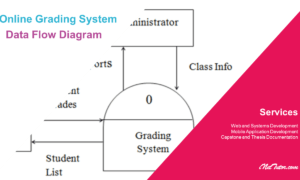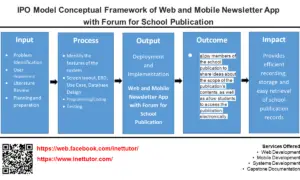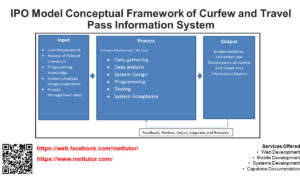Conceptual Framework of IoT-based Flood Monitoring System
Step into the realm of innovation and disaster management with our captivating blog post on the conceptual framework of the IoT-based Flood Monitoring System. By leveraging the power of the Input-Process-Output (IPO) model, we’re about to unravel how this system is not just a technological marvel, but a lifeline for flood-prone regions. Imagine a world where floods are no longer met with helplessness, but with proactive strategies and real-time information. In this article, we’ll take you through the building blocks of this revolutionary system – from gathering vital inputs to processing them intelligently, and finally generating actionable outputs that can save lives and properties. Whether you’re a tech enthusiast, a disaster management professional, or simply intrigued by cutting-edge solutions, join us on this journey as we explore the IoT-based Flood Monitoring System’s conceptual framework using the IPO model. Prepare to be amazed and inspired as we unravel the science behind a system that’s set to redefine flood management.
About the Project
Table of Contents
Natural disasters cannot be avoided, but people can prepare to reduce their effects. The Internet of Things plays a significant role in the development of technologies that can assist communities in disaster preparedness. One of these is an IoT-based Flood Monitoring System. This project is recommended for deployment in flood-prone locations such as areas near rivers and coastal areas. Flood-prone areas are inhabited places with no early warning system or device to notify residents and officials, which is why the researchers chose to conduct a study and build a system that can handle the issue while also saving lives.
Objectives of the Study
The general objective of the research study on the IoT-based Flood Monitoring System is to develop a technologically advanced system that provides real-time monitoring, data collection, and analysis of flood-prone areas. This system aims to enhance early warning capabilities, enable informed decision-making, and ultimately contribute to minimizing the impact of floods on communities and the environment.
- To systematically capture and archive sensor-generated data, facilitating the creation of comprehensive statistical reports. These reports will serve as invaluable tools for informed decision-making, enabling authorities to strategize effectively for flood preparedness and response.
- To seamlessly merge the hardware and software elements of the project, creating a harmonized system that collects, processes, and analyzes data in real time. This integration guarantees the fluid exchange of information between various components, ensuring a robust and efficient flood monitoring mechanism.
- To establish a proactive early warning system that empowers city and barangay officials to promptly disseminate vital information regarding water levels in flood-prone zones. This real-time notification mechanism will help alert local residents, allowing them to take preventive measures and stay safe during potentially hazardous flood events.
What is a Conceptual Framework?
A conceptual framework is a structured and theoretical approach that outlines the key concepts, variables, relationships, and methodologies relevant to a research project or study. In the context of a capstone project, a conceptual framework serves as a guiding structure that helps to define the scope, objectives, and methodology of the study.
The purpose of a conceptual framework in a capstone project, such as the development of an IoT-based Flood Monitoring System, is to provide a clear roadmap for the project’s design, implementation, and evaluation. It helps to organize the project’s objectives, research questions, and hypotheses. Moreover, it establishes the foundation for data collection, analysis, and interpretation.
In the development of an IoT-based Flood Monitoring System, a conceptual framework can play a pivotal role. It aids in identifying the essential components of the system, including sensors, data transmission methods, data processing algorithms, and user interfaces. The conceptual framework assists in understanding how these components interact, ensuring a comprehensive and effective system design.
Conceptual Framework Diagram
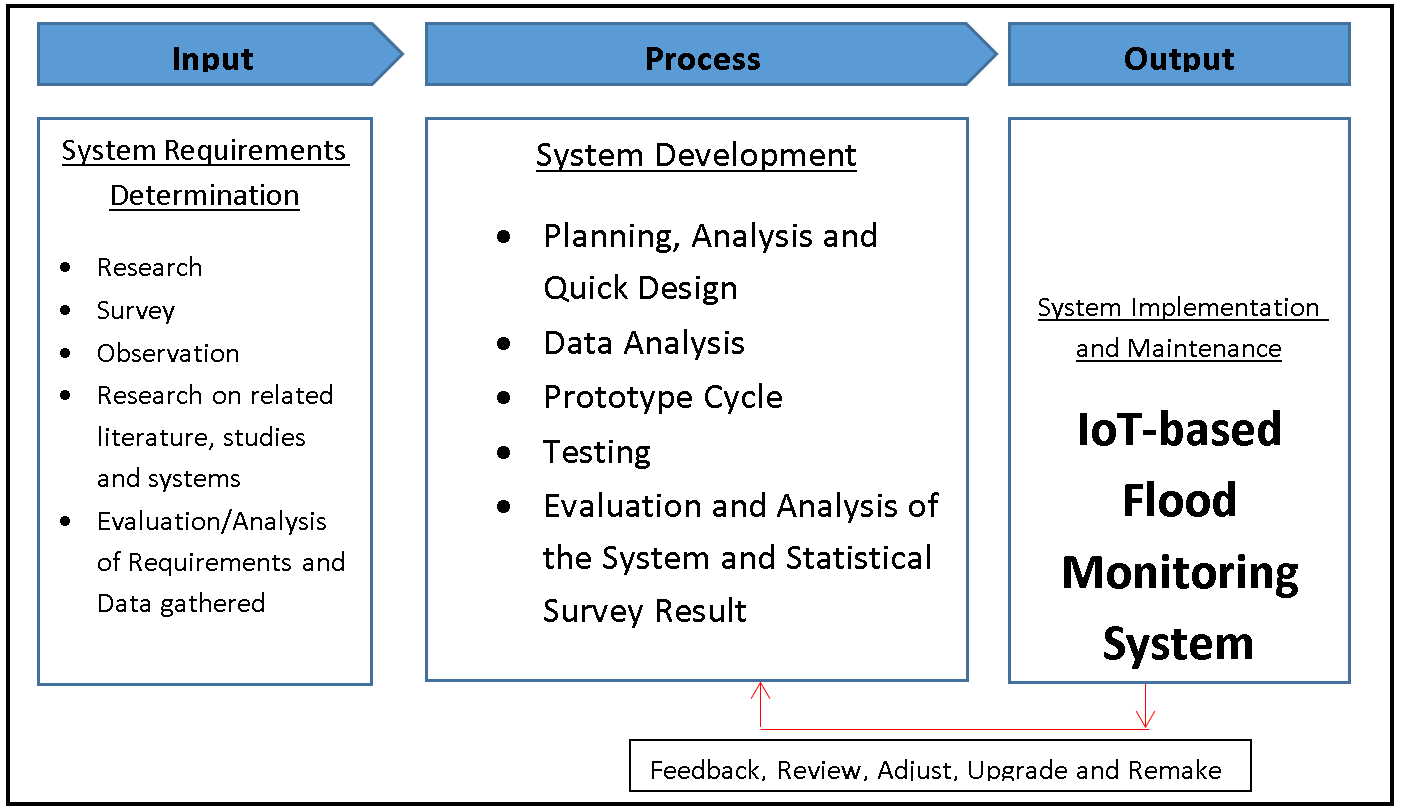
The image above depicts the project’s conceptual framework, entitled IoT-based Flood Monitoring System. It is based on the input, process, and output (IPO) model.
Input
The project will start with an appraisal of the current approach, then go on to research, surveys, and observations. In addition, the researchers must collect important publications and systems to serve as a guide for the project’s advancement. After this process is completed, the researchers will review and analyze the requirements and data collected.
Process
Analysis and Quick Design
The researchers conducted a personal interview with the respondents and the chosen client where the study was conducted during Analysis and Quick Design. Respondents were given the opportunity to make suggestions on how the system should be designed. Following data collection, the researchers created an initial design for the proposed system.
Data Analysis
All data, user requirements, and information will be analyzed by the researchers. This phase also allows the researchers to gain an understanding of how to build the system and how the suggested system would benefit the clients.
System Design
The researchers will begin work on the proposed system. It contains the design; how the system would look depending on user requirements, and any personal design that the researchers/programmers would like to add to make the system more interactive and user pleasant.
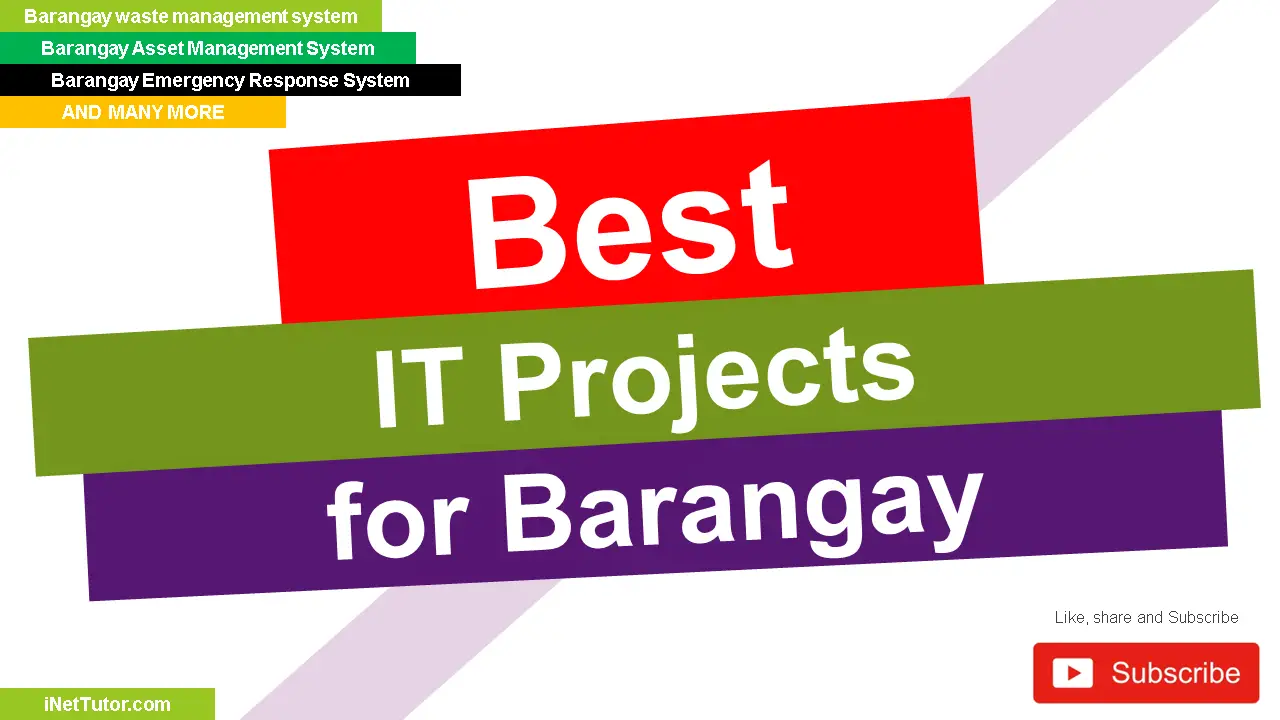
Prototype Cycle
This stage will consist of the researchers’ data being compiled, built, demonstrated, and refined. The researchers create a prototype first, based on the planned design and data tables. The prototype will be shown to the client after it has been built. The researchers demonstrate the system’s operation, the flow of how it operates, and the functions of the system’s features. The next stage is refining, in which the researchers will fine-tune the system based on the client’s extra requirements. Changes to the features flow and functionalities will be made based on the needs.
Testing and Evaluation
This will include the feed backing of the proposed system after it will be implemented and had undergone testing by three Experts. It will also inform the researchers and the developer if there are any bugs, suggestion and if the system’s functionality will works well.
This will discuss the implementation of the proposed system wherein Three (3) Experts will evaluate the proposed system. This will also discuss if the recommended functions and suggestion are met.
Output
After all of the necessary procedures have been completed, the project comes to life and is carried out in the real world. A new project is born, and it will be maintained for the long-term existence of the project. The IoT-based Flood Monitoring System will be put in place and used.
The output phase of the IoT-based Flood Monitoring System marks a critical juncture where the conceptual framework’s vision becomes a tangible reality. This phase encompasses system implementation, installation in the live environment, and the groundwork for future system updates or upgrades.
System Implementation involves bringing together the hardware, software, and networking components that constitute the IoT-based Flood Monitoring System. It entails integrating sensors, communication devices, data processing algorithms, and user interfaces to create a cohesive and functional system. Rigorous testing ensures that all elements work seamlessly, providing accurate and timely flood data.
Installation to the live environment is a pivotal step that positions the system within the actual flood-prone areas. This involves physically setting up sensors and communication devices in strategic locations, such as riverbanks or floodplains. The system is configured to transmit real-time data to a central hub, enabling continuous monitoring. During installation, user interfaces and alerts are fine-tuned to ensure user-friendliness and effective communication of critical flood-related information.
System Update or Upgrade preparations are also initiated during this phase. As technology advances and user needs evolve, the system’s effectiveness can be enhanced through updates or upgrades. This could involve refining algorithms for improved data analysis, enhancing user interfaces for better accessibility, or even integrating new sensor technologies. By laying the groundwork for updates, the system remains adaptable to emerging challenges and opportunities.
Summary
In our blog post, we have delved into the exciting realm of the IoT-based Flood Monitoring System, exploring its conceptual framework using the Input-Process-Output (IPO) model. This model has served as a guiding light, illuminating the path from ideation to implementation of this cutting-edge system.
The Input phase began with thorough research, surveying flood-prone areas, and comprehending user requirements. We moved on to the Process phase, where we intricately designed the system’s components – sensors, data transmission protocols, processing algorithms, and user interfaces. Each of these components seamlessly interacts to form a cohesive system capable of real-time flood monitoring.
Now, in the Output phase, we’re seeing the fruition of our efforts. The conceptual framework’s vision has transformed into a tangible reality. Through meticulous implementation, the system’s hardware and software components have merged into a functional unit. Its installation in the live environment marks a significant stride towards proactive flood management.
But it doesn’t end there. The groundwork laid for system updates or upgrades ensures that this system remains adaptable, embracing advancements and meeting evolving needs. The IoT-based Flood Monitoring System, as explored through the IPO model, encapsulates innovation, real-world impact, and a commitment to safeguarding communities from the devastating impacts of floods.
Readers are also interested in:
Hospital Management System in Laravel 8 Free Source code
Doctor Appointment App in Flutter Free Source Code
You may visit our Facebook page for more information, inquiries, and comments. Please subscribe also to our YouTube Channel to receive free capstone projects resources and computer programming tutorials.
Hire our team to do the project.
